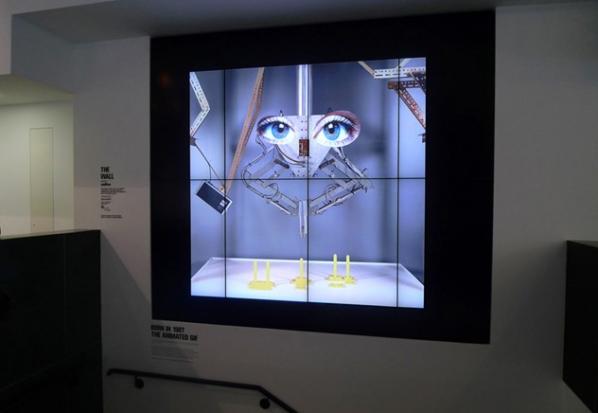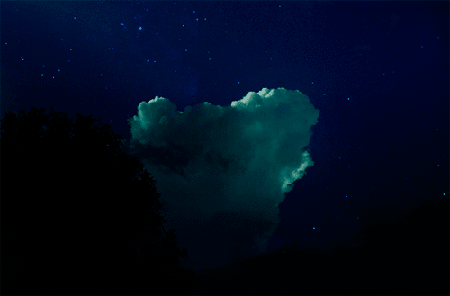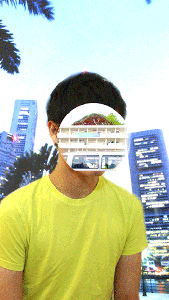



Featured image: “Born in 1987: The Animated GIF” from the site’s page.
Marc Garrett interviews Katrina Sluis, the new curator of the Digital Programme at The Photographers’ Gallery, London. We discuss about the gallery’s recent show Born in 1987: The Animated GIF and what kind of digital exhibitions and projects we can expect from the gallery in the Future.
An edited selection shown on the London Photographers’ Gallery’s new digital wall, during the final weeks of the show. http://thephotographersgallery.org.uk/the-wall-2
The exhibition microsite. An open conversation where anyone can join in and contribute their own GIFs. http://joyofgif.tumblr.com/
Marc garrett: You have joined The Photographers’ Gallery and as part of the new digital programme launched the exhibition “Born in 1987: The Animated GIF”. Could you tell us about this project?
Katrina Sluis: The digital programme presents projects both online and offline, which respond to recent dramatic shifts in the digital image as it becomes increasingly screen-based and networked. As part of this new programme we have launched ‘The Wall’ – a permanent exhibition space on the ground floor of the Gallery, visible both to visitors and passersby on Ramillies street. The Wall itself is a 2.7 x 3m Sharp video wall which we installed after considering a number of different technologies. We were conscious not to use digital projection as it would locate the project within traditions of cinema and video art, and we wanted the screens to respond to the reception and distribution of images within wider visual culture.

For the opening show, we decided to focus on the animated gif for a number of reasons. Firstly, the gif is a uniquely screen-based image format, in which the specific characteristics and limitations of the image file are inherent to the form, in contrast to the other kinds of images the gallery might show which might adopt digital techniques but result in traditional print-based photographic work destined for the gallery space.
I also wanted to disrupt certain expectations about the screens – the fetishisation of resolution and image quality, and what kinds of photographs The Wall’s programme might seek to address. The animated gif in this sense is very interesting – it is one of the first image file formats native to the web, and although it is 25 years old this year it has been undergoing a resurgence on platforms such as Tumblr. In a commissioned essay for the show, Daniel Rubinstein speculates that current resurgence of the gif “is not only part of the nostalgic turn towards the blurred, the unsharp and the faded but it is also a marker of a moment when the history of the network becomes the material from which the digital image draws its living energy.”[1] Frequently authorless and contextless, the gif image works on a different economy in which its value is based not on its uniqueness and scarcity (as in certain forms of art) but its circulation and proliferation. Although there have been significant practitioners of the gif form, it is a format which ultimately resists canonization. And, in the context of a photography gallery, it opens up other debates concerning medium specificity and the ‘post-photographic’.
In approaching the exhibition, I was keen to ask a diverse range of photographers, writers, organizations and other practitioners to contribute a gif for the show. In keeping with the unmonumental nature of the form, I asked contributors to respond within a short timeframe of 7 days. For many contributors, this was the first time they had made a gif; but other contributors already had large followings on Tumblr and some were established net artists. This opening show and associated Tumblr site (http://joyofgif.tumblr.com) became a starting proposition for the project in order to then open up The Wall to gif contributions from the wider public. We will continue to update The Wall with public responses on a daily basis until the final day of the show on 10th July.

MG: At first, some may assume that the first part of the exhibition title ‘Born in 1987’, refers to the fact that today so many young people using computers these days were born in 1987. Yet, the GIF format, short for ‘Graphics Interchange Format’, was introduced to the world of computers by CompuServe in 1987. Was the title of the show deliberately playing with both notions?
KS: I like this idea! The title does self consciously play with the way in which the digital is valorised for its endless ‘newness’ and novelty but yet has this long and frequently overlooked history of creative experimentation. You can also see this reflected in the recent hype around the work of Kevin Burg and Jamie Beck who have (problematically and entrepreneurially) re-branded the gif as the ‘cinemagraph’.
MG: Do you consider this project to be net art, if so, how does it relate to other forms of net art?
KS: The project (and The Wall’s programming) does pose certain problems as it seeks to relocate certain forms of online practice(s) into the space of the art museum. At the same time, the project exists in an online context with its own very different life on Tumbr, where the work circulates in a very different context with a very different audience. I think there are many interesting opportunities which emerge from this intersection of the institutional frame of the museum (with its associated issues of cultural and curatorial authority and the legacy of aesthetic modernism) and the values and politics which inform certain kinds of networked arts practices.
But I also think the project also needs to be understood in the specific context of The Photographers’ Gallery, its history and audience. Whilst the project shares the concerns of net art by raising questions concerning authenticity, authorship and ‘the social’, it is also motivated by the need to rethink familiar notions of photography and temporality, indexicality and the economy of the image – concerns which presently haunt the field of photography theory.
![Kennard Phillipps. GIF image by Peter Kennard and Cat Phillipps. Born in 1987: The Animated GIF. The Photographers' Gallery 2012 [2]](http://www.furtherfield.org/wp-content/uploads/2012/07/fuck-the-markets-latest1.gif)
![Rad Racer glitch 3. GIF image by tracekaiser. Born in 1987: The Animated GIF. The Photographers' Gallery. 2012 [3]](http://www.furtherfield.org/wp-content/uploads/2012/07/tumblr_m5tqfl62wl1qew2moo1_400.gif)
MG: In what way do you see this form of creativity relating to others who may not be so well versed with net art culture, or digital networked practices?
KS: The Wall presents an opportunity for the Gallery to collaborate with diverse communities who can bring their distinct expertise and experiences to the programme, and the net art community has much to offer in this respect. For this reason, we aim to develop The Wall’s future programme through the framework of ‘collaborative research’, in which our audience, along with the organizations we partner with, are potential co-researchers. The co-researcher model developed as an approach to research democracy in the Social Sciences, particularly in the approach of Action Research in the NHS but in a more relevant cultural example was used extensively in the Tate Encounters: Britishness and Visual Culture research project. Co-research recognises both the collaborative and collective nature of meaning construction, through a process which attempts to trace and reveal the complex manufacture of meaning.
At the same time, there is still another related project to be done in highlighting and responding to digital projects whose life is online – this is of course something I admire Furtherfield for doing so brilliantly. On a smaller scale and with a more narrow focus, we hope to launch a blog which will draw attention to online work which relate to photography as it becomes polluted, valorized, hybridized and networked.
![GIF image by Paul Flannery. Born in 1987: The Animated GIF. The Photographers' Gallery. 2012 [4]](http://www.furtherfield.org/wp-content/uploads/2012/07/tumblr_m442xish4q1rvlji4o1_500b_0.gif)
MG: Some, may view this this exhibition as relating to Internet Folk Art. There is an interesting article by Kenneth Goldsmith[1] where he discusses the digital theorist Rick Prelinger’s claim “that archiving is the new folk art, something that is widely practiced and has unconsciously become integrated into a great many people’s lives, potentially transforming a necessity into a work of art.”
Now, this is not directly relating to the show itself, but it resonates something regarding the inclusiveness of the show. So, in respect of it ‘possibly’ possessing aspects of Folk Art, what connections do you see as relevant or not, and what does it mean to you?

KS: By focusing on the gif the show does problematise the distinction between artist and audience, in which participation, openness and the ‘crafting’ of the image becomes key. However I have reservations about the use of the term Internet folk art, which could be construed as imposing a certain modernist logic on the discussion, burdening it with an analogue modeling of high and low culture. The research approach has been adopted precisely to avoid the trap of binary nominalism, and to problematise the tendency to shoe horn internet practices into the language of cultural studies and aesthetics.
MG: The Photographers’ Gallery was the first independent gallery in Britain devoted to photography and has been going since the 70s. It is the UK’s primary venue for photography and has been dedicated in establishing photography as an essential medium, representing its practice in culture and society. It seems that The Photographers’ Gallery is going through another transition. You have already mentioned how hybridized and networked the nature of future projects will be. So what kind of exhibitions and projects can we expect in the future?
KS: Because digital technology is not in itself a new photographic medium, but essentially a hybrid and converged set of technological practices, it raises many interesting problems, both theoretical and practical for a Gallery focused on photography. To the computer, the photograph is indistinguishable from the other binary blobs of data we used to call books, films and songs. The crisis of digitization and medium specificity now extends to the domain of the camera – Digital SLRs are coveted for their ability to shoot high quality digital video, and we turn to our mobile phones when we want to take snapshots. This is a very rich context for the programme to explore, and ideally the future projects will respond to the technical, creative and cultural languages of photography as produced by computer engineers, web developers, photographers, artists, networked communities, social scientists and other practitioners.
Our next show on The Wall (opening 13th July) features the practice based research of Susan Sloan into portraiture using motion capture and 3D animation techniques widely used in entertainment, medicine and the military. Her motion studies refer to the traditions and conventions of portraiture and the changing role of the camera as a recording device. At the same time, her work raises questions concerning the convergence of painting, animation, film and photography in the digital realm.
The future digital programme which will occupy different spaces and address various photographic practices including augmented reality, social media, electronic publishing, interactive media, mobile computing and synthetic imaging.
The Joy of GIF – the London Photographers’ Gallery’s new digital wall. Article by Wendy McMurdo.
http://www.foam.org/foam-blog/2012/may/photographers-gallery